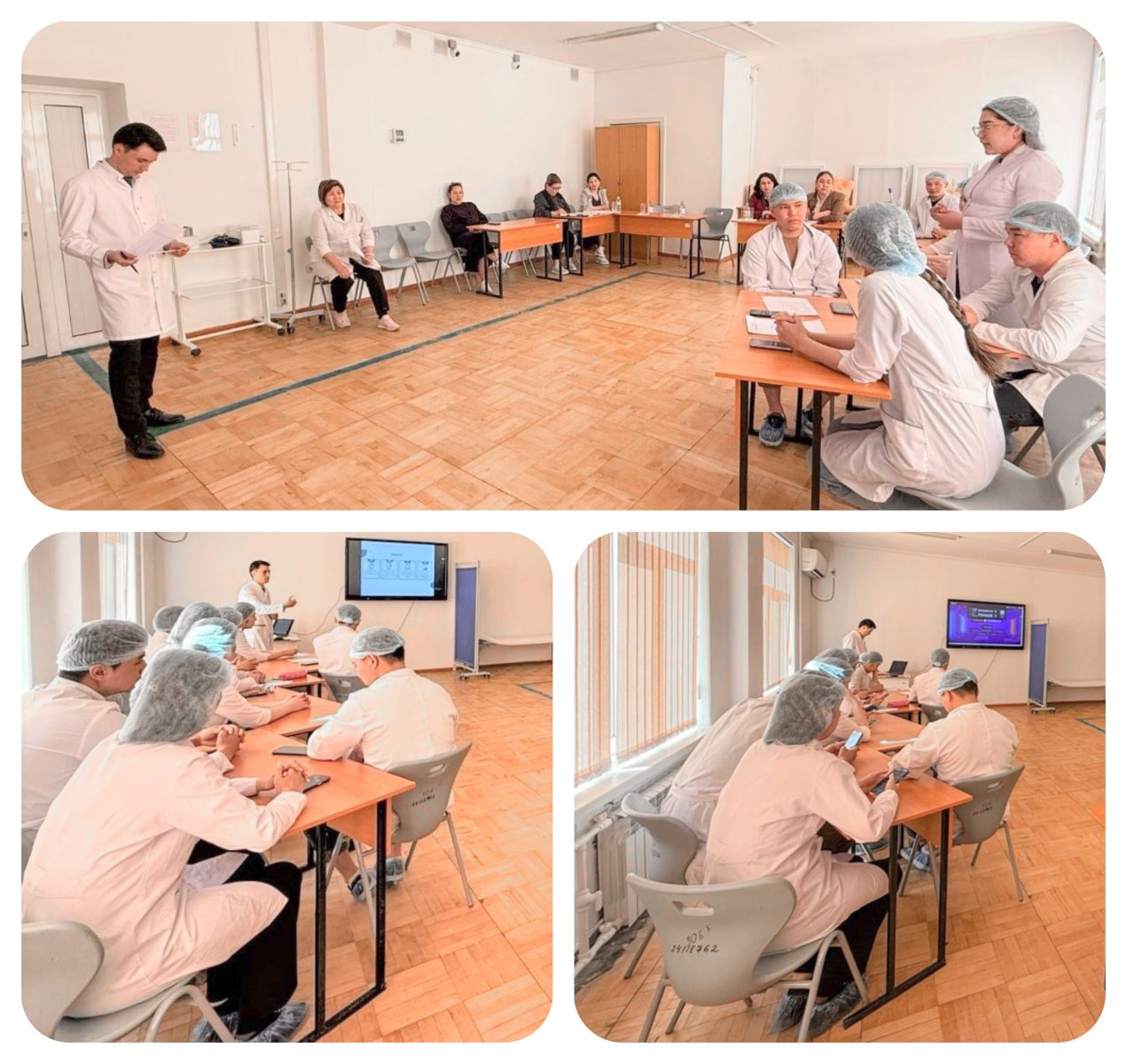OPEN CLASS ON THE "STANDARDIZED PATIENT" METHOD USING ARTIFICIAL INTELLIGENCE TOOLS
On April 1, 2025, the Department of “Emergency medicine and nursing” hosted an open class on the "Standardized patient" method using artificial intelligence tools on the topic "First aid for acute coronary syndrome". The open class was conducted by an assistant of the department Yunusmetov E.Sh., with students of group B-ФКК-01-24 of the Pharmacy educational program. This class was attended by the chairman of the academic committee "Medicine", head of the department for the development of joint educational programs D. Auyezhankyzy, chairman of the Academic Committee "Nursing", head of the doctoral and master's degree sector U.A. Khodzhakulova, head of the methodological department B.M. Rasheva, senior methodologist of the methodological department G.S. Aldabergenova, instructor of the center for practical skills G.S. Omarova and the assistant of the department E.A. Orazbayeva.

During the lesson, the participants worked out algorithms for the diagnosis and first aid of patients with suspected acute coronary syndrome. The standardized patient, trained in advance, demonstrated typical symptoms of the disease, which allowed the participants to immerse themselves in the situation as much as possible and work out the necessary actions: identifying the primary symptoms; assessing the patient's condition and conducting primary diagnostics; providing pre-medical care and calling an ambulance team and transmitting information about the patient. This training format allows participants to acquire practical skills in providing first aid in conditions as close as possible to real clinical practice.

The use of artificial intelligence technologies in the classroom using the "Standardized Patient" method opens up new prospects for optimizing and improving the effectiveness of training specialists in the field of medicine and pharmacy. The integration of simulation technologies with the analytical tools of artificial intelligence allows not only to significantly improve the quality of professional training, but also to more accurately identify and correct errors in a timely manner.
 364 views
364 views
